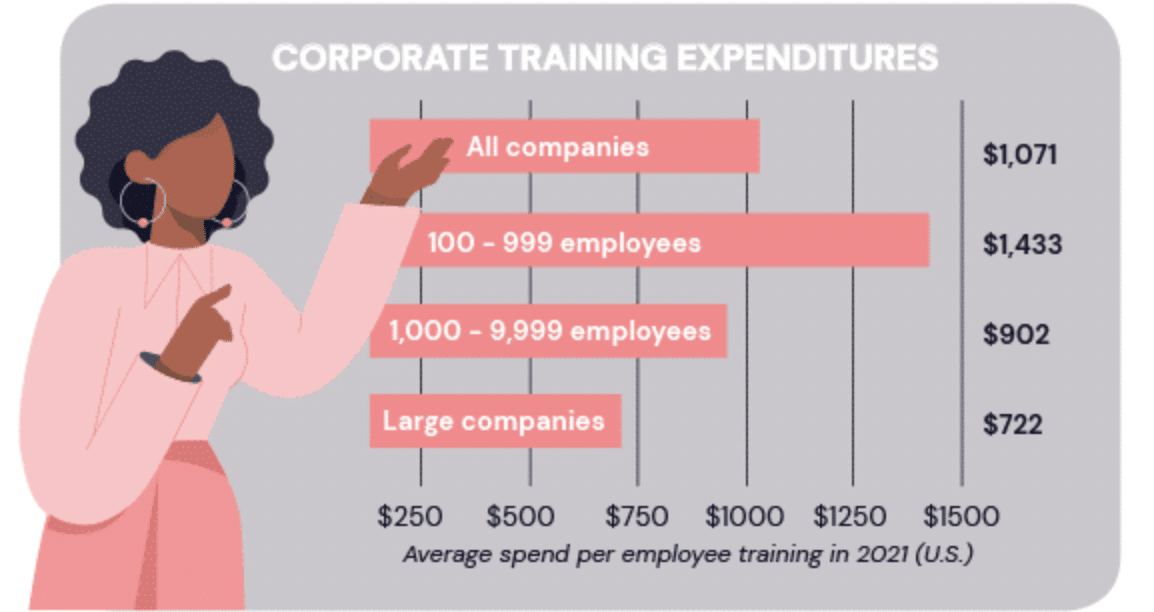Clarifying your definition of success
Online learning has taken over in a big way, offering flexible, fast education that fits around part-time jobs or side hustles for students. But with quizzes, videos, discussion boards, and reading lists abounding, eLearning success doesn’t always translate to test scores. Sometimes, success lies in whether students remain engaged long enough to complete courses or simply remember what they learned later.
Tracking data accurately can be an incredible game-changer. Measuring student interactions, confidence levels, and value gained count when creating valuable lessons that deliver real results for our learners. Proper analytics will reveal when lessons work or when they need rethinking altogether.
Many students experience immense pressure to excel academically when juggling deadlines, life responsibilities, and essays. Monitoring one’s progress cannot be understated—whether attending live sessions or learning independently in the background—tracking it all makes a noticeable difference. Tools like an essay writer may make the workload seem much more manageable in the long run.

Course completion doesn’t say everything
Although completion can be exciting, it doesn’t tell the whole story: A student could make it through without learning much or drop out despite receiving great value from it.
Therefore, it’s crucial to look beyond surface-level stats as an indicator. A better measure might be whether learners are progressing steadily through the material at an even pace, revisiting key content, or actively contributing to discussions.
Deeper insights help course creators and their students identify what’s working and what’s simply filler material. The goal shouldn’t be just getting through content more quickly—instead, it should be about making sure the lessons stick!
Engagement is the real game-changer
Engagement is one of the strongest indicators that an eLearning course meets its intended goal, though not all forms of engagement are equal. Clicking through slides alone doesn’t count. Real engagement requires:
- Posting thoughtful responses in forums
- Submitting queries during live sessions
- Rewatching complex videos whilst taking notes or bookmarking key sections
Students’ presence demonstrates their involvement, so platforms that provide engagement analytics help instructors tailor their materials and support students where needed most.
Progress tracking builds momentum
Students love to see how far they’ve come. Tracking progress visually—such as with progress bars or milestone badges—can help keep students motivated.
Progress cannot be communicated to students effectively without clear tracking and display; otherwise, they could become discouraged from learning; thus, how progress is tracked and displayed matters as much as its content.
Progress reports can reveal any learning gaps. Perhaps someone is moving quickly through videos but skipping practice quizzes—that can be a telltale sign that they might be overconfident or overwhelmed.
Assessment should include more than simply scores
Traditional tests only reveal part of what someone knows—with eLearning, there’s the opportunity to dive deeper. Instead of simply depending on final grades for assessment purposes, this tool provides additional means:
- Growth over time (pre-test vs. post-test results)
- Peer feedback on assignment quality and written reflection
- Applying concepts in real-life scenarios
Students working on major projects already understand that true success cannot be measured with just one exam or quiz. Success should be evaluated based on how ideas connect, their clarity in communication and whether you can use them outside of class.

Learner satisfaction: An important metric
Even with the most advanced platforms, elegant videos, and engaging quizzes available today, your students may still not enjoy their experience. Regular feedback collection can make a major difference in this regard:
- Short and anonymous surveys after each module can be utilized as tools to achieve this
- Take quick emoji reactions or star ratings quickly
- Launch comment boxes to capture raw thoughts
Students who feel heard are more likely to stay with a course and recommend it to others, allowing instructors to adjust quickly rather than wait until the semester’s end.
Retention is key
Retention measures whether students remember what they learned. Retention provides insight into the real value of any course. Some methods to track retention:
- Follow-up quizzes that may be administered after several weeks have elapsed
- Case studies that showcase what students have learned
- Mini refreshers or recap emails
If learners forget what they learned two days after the quiz, something went awry—but they can still use what they’ve been taught a month later. That is true success.
Device and time analytics are more useful than you realize
Most students juggle between phones, tablets and laptops depending on their location. Knowing which device students prefer can help tailor the learning experience—maybe mobile users require shorter content chunks while desktop users prefer deeper dives.
Time analytics provide insight into when students are most active. Do they cram at midnight, watch videos during lunch breaks or spend their lunch breaks relaxing and learning new content? Having this insight helps maximize when and how new content should be released.
Peer interaction: Harnessing the strength of community
Learning is much more effective when shared among a community of peers. Engaging others through forums, group projects, or shared notes builds community while increasing motivation.
Analytics can show how frequently students comment, collaborate or help one another in your course. If these numbers are low, it could indicate that changes may need to be made within its social components. Often, students learn best through collaboration between peers, as it is informal, relaxed and often more relatable for learners.
Final thoughts
Assessing eLearning success requires more than numbers—it involves understanding students emotionally. By tracking key performance indicators like engagement, retention, and satisfaction, you gain more clarity into what’s working and how best to enhance learning for everyone involved.
Students navigating online classes, side gigs, and long research projects often need assurances that their progress is being noticed and supported. Tracking success for students means showing them they matter—and helping them cross the finish line smarter, stronger, and more confident.





